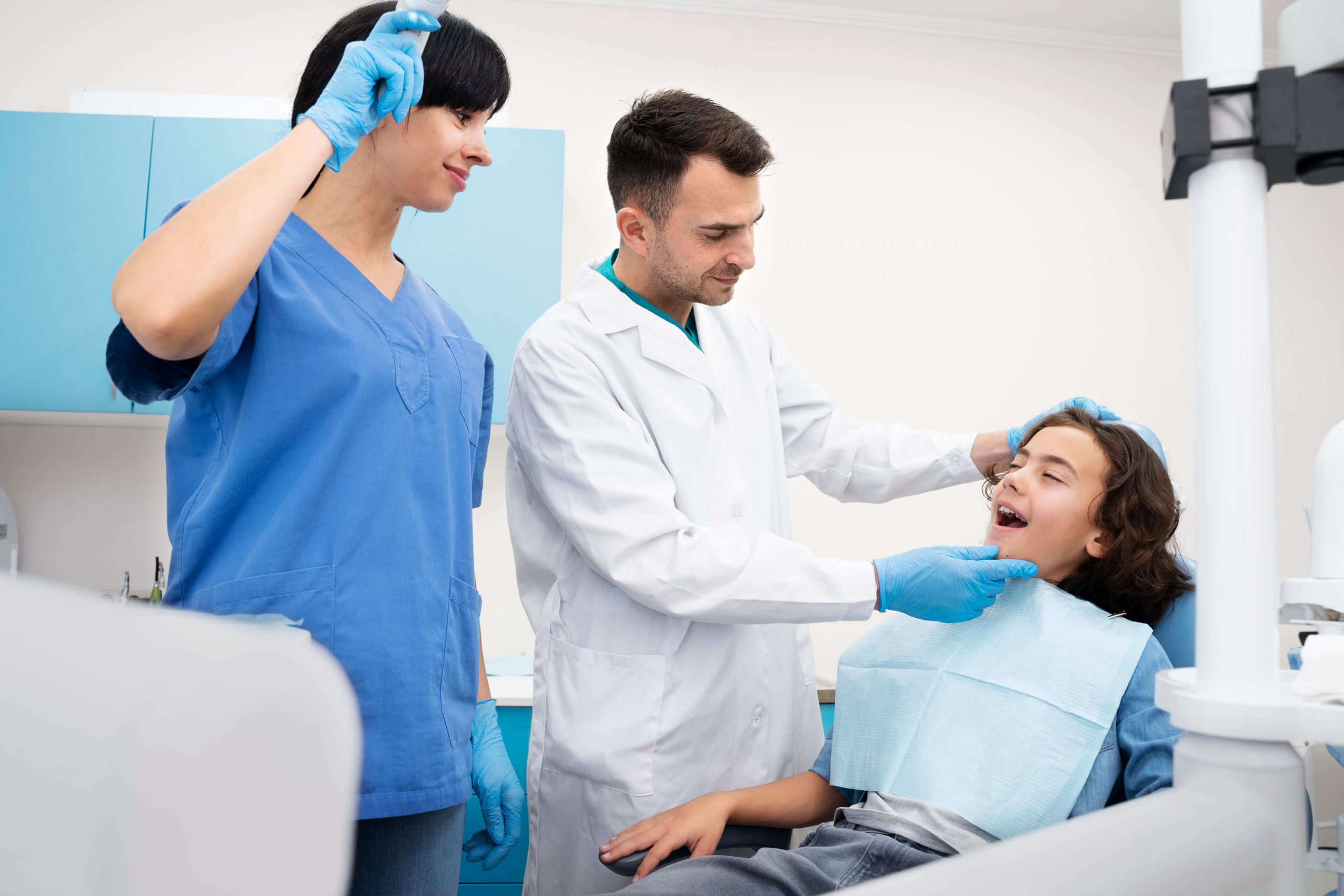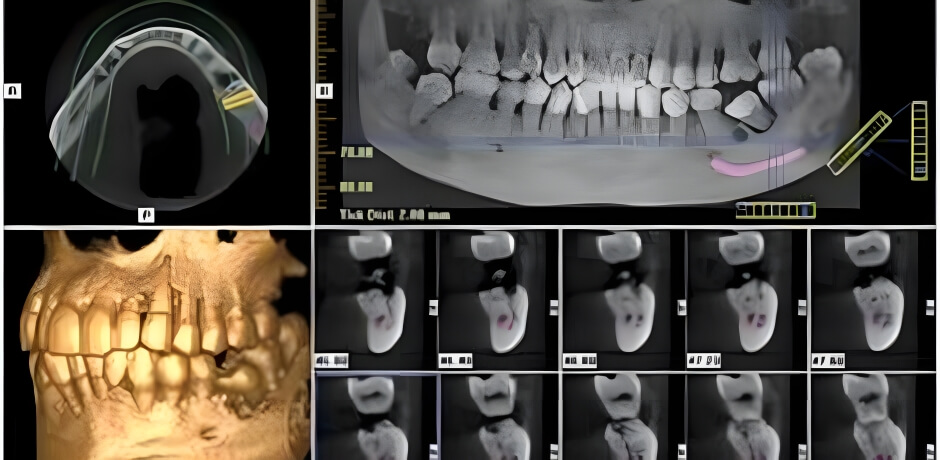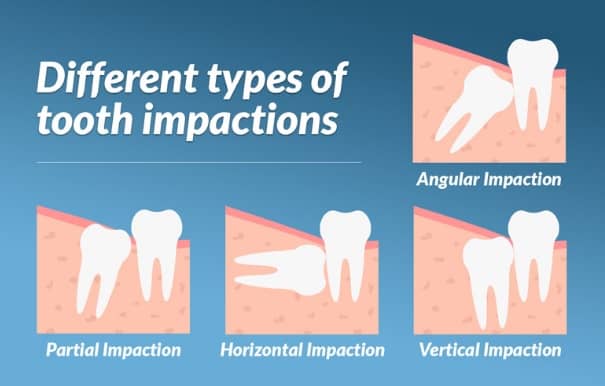
How Long Will Pain last After Wisdom Teeth Removal?
The healing period after wisdom teeth have been removed could be as few as 1 to 2 days of soreness and bruising with some throbbing, achey pain. The soreness and pain usually dissipates to a little soreness at 3 to 7 days after the surgery. The pain is uaually controlled by ibuprofen and prescription pain medication. Healing patterns are variable depending on adherence to post-operative instructions, patient health status and surgical technique.
When Can You Return to Work After Wisdom Removal
The best plan after wisdom removal is to lay low and rest for 1-3 days after the procedure. Maybe, have your wisdom teeth removed on a Thursday and lay low through the weekend. The best age for wisdom teeth removal is between the ages of 14 and 23. Most people will be able to return to work after a long weekend. In fact some people may have very little pain at all with pain and swelling totally controlled with ibuprofen. Others may have pain and nagging symptoms lasting up to 7-10 days (but this is more unusual). On the average, the worst symptoms are during the first 1-3 days and after that there can be minor soreness for up to a week or so.

Plate Rich Fibrin PRF Speeds Up Wisdom Teeth Healing
The technique uses Platelet Rich Fibrin aka PRF and Ozone. The technique accelerates wisdom teeth healing in surgical sites by preventing infection and stimulating faster bone growth. PRF is very rich in white blood cells and bone morphogenic protein.
Contact us today for a no cost consultation including 3D X-ray
PRF and Ozone with Wisdom Teeth Extraction Technique Video
PRF and Ozone Accelerates Healing and Decreases Pain
Platelet Rich Fibrin or PRF decreases the chance of dry socket, pain, swelling and jaw bone infections after oral surgery procedures. Dental PRF is prepared by spinning patient blood in a centrifuge and isolating the PRF. PRF is a thick yellow jello-like blood isolate. During wisdom tooth removal, jaw bone is exposed. Bone has very little blood supply as compared to other tissues in the human body. In areas where there is little blood, the body has less ability to heal quickly and less defense against infection. We place PRF into tooth wisdom tooth extraction sites. In the absence of the PRF, dental extractions sites are left to heal open to the oral cavity and there is a bony hole in the jaw bone. Saliva, bacteria and other contaminants are free to pour down into the jaw bone. When PRF is placed into the extraction site, the PRF protects the site from infection and enriches the area with fibrin, platelets, white blood cells and bone growth factors that accelerate jaw bone healing.
Delaying Wisdom Procedures Will Increase Pain Afterwards
The gum and bone surrounding the teeth get stronger over time, making extraction more difficult. Once the teeth start hurting, you will need to drop everything on your schedule and schedule emergency wisdom teeth extraction surgery. Also, if there is pain and swelling prior to have a surgical procedure, there will likely be more pain after the procedure. If a wisdom tooth gets too infected, it may even be necessary to be on an antibiotic prior to getting the teeth taken out. In some cases the teeth can spread infection to other parts of the body and necessitate a trip to the ER. Wisdom teeth removal is one of the most common oral surgery procedures we perform.
Wisdom Teeth Surgery 1 to 2 Days After:
Some throbbing and aching pain controlled by prescription medications. Minor bleeding of extraction sites after rinsing, eating and drinking. Minor bruising and swelling both inside and outside of the mouth. Notify your Oral Surgeon if there is significant and persistent bleeding or moderate to sever swelling. Notify your doctor if you get severe nausea or any severe swelling of your tongue, throat or rash and hives.
Wisdom Teeth 3 to 4 Days After Extractions:
Throbbing and aching pain will give to soreness. There may be some general jaw inflammation and deep discomfort. Jaw opening may be limited down to 60% of normal opening. Be sure to rinse with warm salt water and keep food particles out of extraction sites. gently dab and brush at the extraction sites with a tooth brush (no tooth paste) in between saltwater rinses. You may see a white or yellow tissue forming in the extraction site that has a fluffy appearance. It may be food particles, plaque or normal collagen formation. Collagen is what the body makes ahead of gum tissue. Light brushing and rinsing should remove plaque and food particles. Do not Force out the Collagen as it is protecting the site. If after rinsing and cleaning, you smell a persistent foul odor, notify your Oral Surgeon.
Wisdom Healing After 5 to 7 Days:
Most Symptoms should subside except limited jaw opening and a minor, occasional ache. It may take 2-4 weeks to reach normal Jaw opening. If any stitches remain, you should return to your dentist to have them removed. During this period you should be able to stop taking the prescription medications. Some patients who bruise easily and who had pain before the extractions ( especially patient who received emergency wisdom tooth removal ) may have more pain for up to 10 days. It is very important to finish all antibiotic medications even if there is not pain.
Wisdom Teeth Recovery Depends on Several Factors:
- Overall health
- Age
- Was Platelet Rich Fibrin or PRF used?
- Gum health surrounding the surgical site
- The type of surgery needed – full bony horizontal tooth impaction vs partial bony wisdom tooth impaction
- Difficulty of case
- Technique- tooth pulling vs root sectioning and elevation
- Health and care after oral surgery
Wisdom Teeth Should All be Removed at the Same Time
The best course of action, is to remove all your wisdom teeth in one visit. Most of the time, the pain is not much different whether one or all four wisdom teeth are pulled out. Also, who wants to sit through and “enjoy” getting their wisdom teeth removed on more than one occasion. If someone has too much anxiety, they should have sleep sedation dentistry and have all the teeth removed in one day. Unless there is an extreme condition, such as severe swelling or infection of one tooth, you should remove all four wisdom teeth during one visit.
Is Removing Wisdom Teeth Necessary?
Yes, It is definitely medically and dentally necessary to remove impacted wisdom teeth that are Impacted, Infected and damaging adjacent teeth. These same teeth cannot be cleaned, cause gum infections, tooth infection, jaw bone infection and root resorption of adjacent teeth and life threatening bone pathology. See the above picture. If your wisdom teeth are not impacted in soft tissue or bone, they may be able to be kept clean and healthy in the mouth. Not all Wisdom Teeth need to be removed.

wisdom tooth removal dentist 3
Oral Surgery After Care Instructions:
- Bite down with firm pressure on cotton gauze or damp cotton pack placed over the extraction socket for at least 30 minutes
- Use ice packs for first 24 hours to minimize chances of swelling
- Take a mild strength painkiller for reducing pain and discomfort
- Avoid spitting, sneezing or coughing
- Do not smoke
- Avoid sucking on a straw with pressure to avoid clot dislodgment
- Eat soft, cold and non-spicy foods
- Restrict your physical activities and take complete rest for 24-48 hours
- Avoid vigorous rinsing, spitting and repeated touching or licking the area of surgery,
- Perform warm water saline rinses 4-5 times a day after 24 hours to flush out food debris for soothing and antibacterial effect,
- Minimal post-operative bleeding is a common occurrence. Do not panic. However if persistent bleeding is encountered, bite firmly on a wet tea bag and call your oral surgeon
- If any silk sutures were placed in your mouth, visit after 7 days for their removal.
What is Dry Socket?
If Wisdom Teeth Healing does not follow the schedule above, and especially if there is not progress after days 3-4 and the pain even worsens, you should call you Oral Surgeon Immediately because you may have a Dry Socket. Dry Socket requires immediate attention and treatment by the Oral Surgeon.

wisdom tooth dry socket
What are the different kinds of wisdom teeth extractions?
- Angular vs Horizontal
- Vertical Wisdom Tooth Impactions
- Partially erupted vs Complete Bony Wisdom Tooth Impaction
Wisdom Teeth Recovery Tips:
- No Strenuous Activity such as running, music classes
- Avoid Swishing of Fluid, Spitting, no drinking through straws
- Take medications on schedule and take pills ahead of pain and swelling
- Use ice packs 15 minutes on and 15 minutes off
- No Tobacco products and definitely no smoking
Allow 2-3 days to Resume Normal Activity
Often 2-3 days of recovery is needed before returning to regular routines. You may need an additional day or two to regain strength. During the first 24 hours, avoid any strenuous cardiovascular activity that could encourage bleeding from the removal site, or interfere with the blood clot stability in the extraction site. Disruption of the clot in the extraction site can cause a dry socket and delayed healing and pain. Avoid working out, athletic competition, band and choir participation for 3 to 4 days. If you feel tired, have increased pain, swelling, or bleeding, allow an extra day or two of light activity. If you had sedation dentistry, you need to be by another adult for at least 5 hours oral surgery. You cannot be left unattended. You may need assistance standing and going to the bathroom while you are still feeling the effects of the anesthesia. Do not drive, drink alcohol, or operate any kind of machinery for 24 hours after oral or IV Sedation Dentistry. You will receive written prescriptions.
Wisdom Teeth Pain is the Worst the First 1-3 Days
The worst discomfort occurs during the first six hours after local anesthetic has worn off. Take your medication while you are still numb. People do better when they take their medications on time and stay ahead of pain and swelling. It is possible that slight bleeding may reoccur especially after eating and drinking. If significant bleeding occurs, place fresh gauze packs or wadded paper towel over the surgical site that is actively bleeding and bite very firmly for thirty minutes. Avoid spitting or using straws, as they can cause bleeding by creating negative and positive pressure in the mouth. You can minimize swelling by using cold packs for the first 24 hours. This should be used next to the surgical sites 20 minutes on and 20 minutes off. Day one, do not brush, rinse or spit. Day two, brush your teeth with a soft toothbrush. You should also begin gentle rinses with warm salt water 2-3x per day (especially after meal time and before bed). Avoid smoking for at least 3 days and avoid chewing tobacco until the surgical sites are completely healed. Patients who use tobacco experience a longer recovery period and a higher level of complications.
PRF Accelerates Wisdom Teeth Healing,
Platelet Rich Fibrin or PRF decreases the chance of Dry Socket, Pain, Swelling and Jaw Bone infections that can persist after oral surgery. PRF in wisdom teeth removal is prepared by spinning the patients own blood in a centrifuge and isolating the PRF which is a thick yellow jello-like isolate. During Wisdom Tooth Removal Surgery, jaw bone is exposed. In bone there is very little blood supply as compared to other tissues in the human body. In areas where there is little blood, the body has less ability to heal quickly and less defense against infection. We place PRF into tooth wisdom tooth extraction sites. In the absence of the PRF, dental extractions sites are left to heal open to the oral cavity and there is a bony hole in the jaw bone. Saliva, bacteria and other contaminants are free to pour down into the jaw bone. When PRF is placed into the extraction site, the PRF protects the site from infection and enriches the area with Fibrin, Platelets, White Blood Cells and Bone Growth Factors that accelerate jaw bone healing. In Cases of very difficult removals, Natural Bone Grafts with PRF may be necessary. PRF for dental implants is also very helpful in decreasing the healing time after dental implant surgery.
What is a Wisdom Tooth?
The Wisdom tooth is the third and last molar on each side of your upper and lower jaws. These teeth commonly come in the mouth in late teenage or early twenties and are the final teeth to erupt in the mouth. Wisdom teeth are the most common molars which fail to erupt in the mouth due to their far most location and reduced jaw bone growth and space causing physical hindrance. Due to obstruction in their path of eruption in the mouth, tilted and rotated wisdom molars present which often cause infection and swelling of surrounding gum tissues. Infection and swelling occurs especially when food particles cannot be cleaned with daily brushing and becomes accumulated in the spaces between gums and teeth. Severe infection occurs and it becomes necessary to remove tilted, crooked and drifted wisdom teeth by exposing and removing surrounding jaw bone. American Dental Association recommends thorough check up of wisdom teeth around 16-19 years of age and their early removal if necessary to prevent serious side effects in future.
Common Side Effects of Wisdom Teeth Surgery
- Pain,
- Swelling
- Bruising
- Limited opening
- Bleeding
- Tooth Sensitivity
Risks and Complications of Wisdom Teeth Surgery
- Sinus exposure during removal of upper wisdom tooth. Chances are small but considerable. Sinus communications normally heal and close on their own without the need for additional procedures
- Damage to teeth adjacent to the extraction site including broken fillings, crowns, tooth cracks
- Damage to nerve in the lower jaw. Usually heals and returns to normal in 1-6 months. Patient will experience temporary numbness or partial numbness during the healing period.
Wisdom Tooth Removal Surgery should be performed with as little trauma and injury as possible. Typical initial wisdom tooth removal surgery usually takes 3-4 days time ranging up to 7-10 days. The estimated length of recovery basically depends upon the degree of severity of tooth impaction, length of surgery time, difficulty of removal and their path of eruption judged by Ct scan and CBCT imaging.
How long will I be in pain after wisdom teeth surgery?
1-3 days of pain where you should lay low.
Should I get an implant to replace my wisdom tooth?
Rarely, but if a full compliment of wisdom teeth are in a health bite, it may be necessary to replace a wisdom tooth with a dental implant to prevent the loss of another wisdom tooth.

 (301) 421 1996
(301) 421 1996 burtonsvillesmiles@gmail.com
burtonsvillesmiles@gmail.com